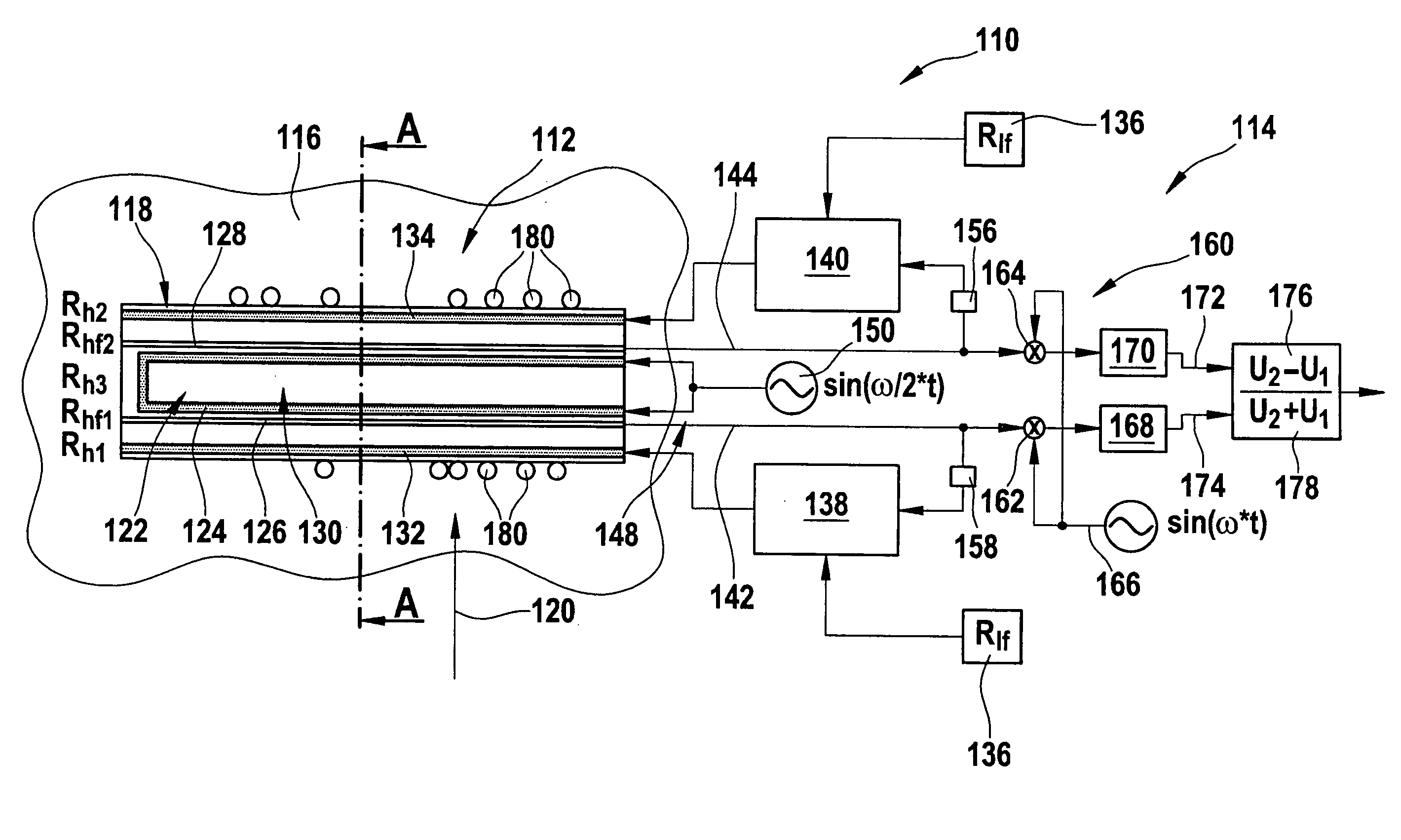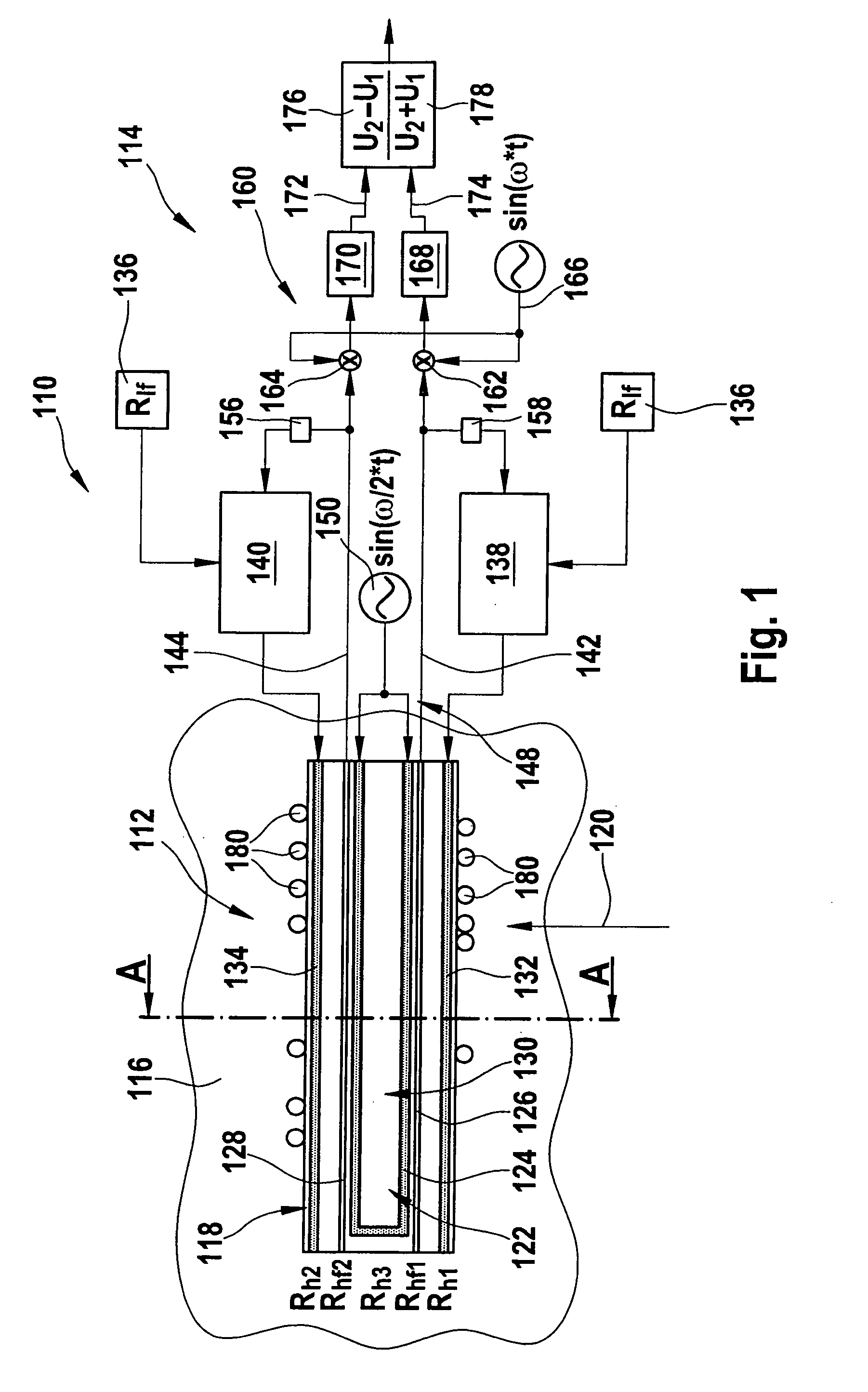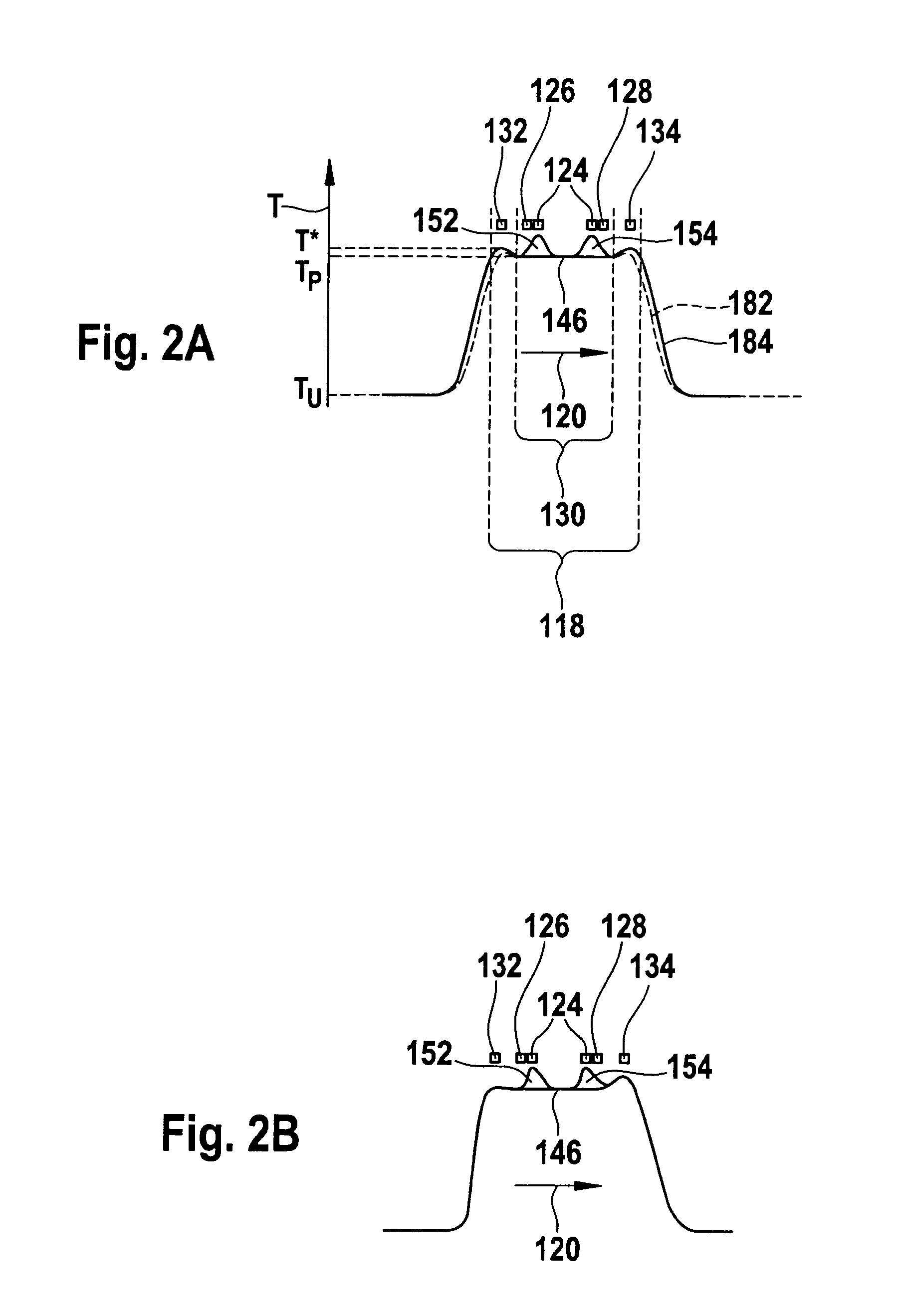[0010]The hot-film air mass meter has a sensor chip having a chip surface across which an air mass flow is able to flow. A “main flow direction” may be understood to denote, e.g., a main transportation direction of the air mass flow at the location of the hot-film air mass meter, e.g., at the location of a sensor chip. Local turbulence may be disregarded for the most part. The hot-film air mass meter is optimized especially for measuring an air mass flow having a flow velocity of between 0 and 60 m / s. As described above, the sensor chip may be, e.g., a
silicon chip. The chip surface in turn has a measuring surface and a mainland surface. In this context, the
subdivision of the chip surface should be implemented in such a way, in particular, that the sensor chip has a transversal
conductivity in the region of the measuring surface that is less by at least one
order of magnitude than in the region of the mainland surface. This reduction in the transversal
conductivity may be achieved in different ways. As known from the related art and described earlier, it is possible to use sensor chips having a sensor diaphragm with a thickness of only a few μm, for instance. The low thermal
conductivity (approx. 0.02 W / m K) of the air surrounding the sensor diaphragm is utilized in this context. As an alternative, a porous region or a plurality of porous regions in the sensor chip may be realized as measuring region having a measuring surface that faces the air mass flow, for instance by rendering a
silicon chip porous. This enables the production of measuring regions which, due to the enclosed air cavities, have transversal conductivities of 0.1 to 2 W / m K, in comparison with a silicon substrate having a thermal conductivity of approximately 156 W / m K.
[0015]The fact that the temperature increase caused by the periodic heating does not extend into the
edge region of the measuring surface, or extends only to a negligible extent, has two decisive advantages: For one, the temperature profile of the periodic heating used for measuring the air mass flow does not superimpose itself, or superimposes itself only slightly, to air turbulence that arises in the
edge region of the measuring surface and is due to contamination deposits that have collected there, which typically have an extension of approximately 100 μm parallel to the main flow direction (i.e., into the region of the measuring surface). For the most part, the actual measurement thus actually detects the main flow of the air mass flow, without any significant influence by turbulence attributable to contamination. For another, the temperature profile of the periodic heating used to measure the air mass flow is not, or only insignificantly, affected by changes in the thermal conductivity of the measuring surface in the
edge region of the measuring surface, such changes likewise being caused by the contamination arising there. Both from the standpoint of flow
mechanics and thermal aspects, the heating by the at least one central
heating element is thus largely decoupled from the interference by contamination present in the edge region of the measuring surface.
[0024]However, the
disadvantage of a precisely level “
plateau” is that contamination arising in the region of this
plateau is no longer subjected to any thermo-gradient force and is therefore not shifted out of this region. It has therefore shown to be advantageous if a slight
temperature gradient (e.g., 10 K / 100 μm) still remains in the region of this “
plateau” as well, which shifts contamination into the edge region of the measuring surface. Stronger temperature gradients may then adjoin the plateau region in the edge region of the measuring surface so as to effectively keep contamination away from the plateau.
[0026]This selection of the basic temperature on the basis of an “over-temperature” relative to the ambient temperature has numerous advantages. For instance, it minimizes interference effects caused by fluctuations in the ambient temperature. A main
advantage, however, consists of the “
barrier effect” described previously already. A “temperature wall” is built around the central hot-film air mass meter circuit, which, due to the thermo-gradient effect, prevents contamination such as oil, in particular, from reaching the region of the hot-film air mass meter circuit. This design of the hot-film air mass meter and the described method thus effectively protects the central hot-film air mass meter circuit from interference effects.
[0027]In addition to the advantages already described, the described hot-film air mass meter and the described method in one of the described developments have numerous additional advantages in comparison with conventional devices and methods. In particular, no absolute values of the temperature profile but only relative changes within a separately controlled temperature plateau are detected.
Contamination deposits outside this area therefore do not affect the measuring signal. Furthermore, by scaling the output signal to the sum of the input voltages (
composite signal), the hot-film air mass meter is able to be designed to be immune to
resistance drift of the circuit tracks. Another
advantage is that the sensor chip of the hot-film air mass meter may have a relatively small and space-saving design. This makes it possible to considerably reduce the area minimally required for the measurement, i.e., the measuring surface or the sensor region, for instance, in comparison with the related art. This is especially due to the fact that, as described earlier, a “temperature wall” is able to be built around the measuring surface or around the sensor region due to the essentially constant basic temperature profile, so that even contamination located in close proximity to the circuit tracks of the central hot-film air mass meter circuit is effectively able to be kept away from the central hot-film air mass meter circuit.
 Login to View More
Login to View More  Login to View More
Login to View More 


